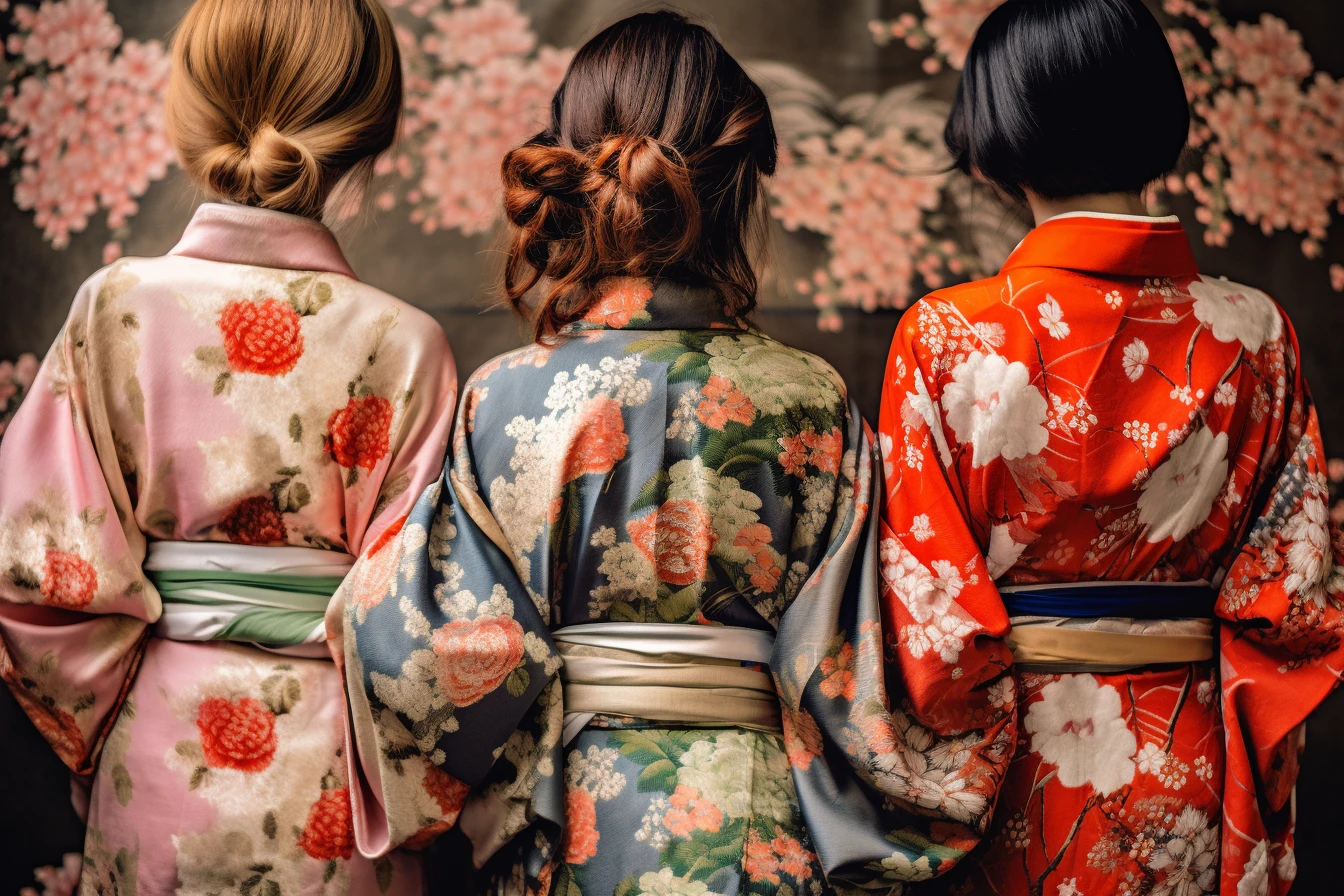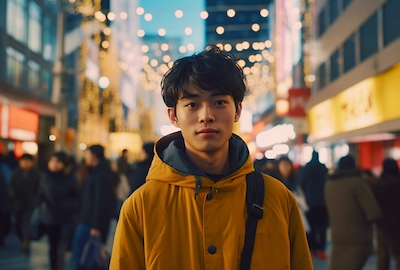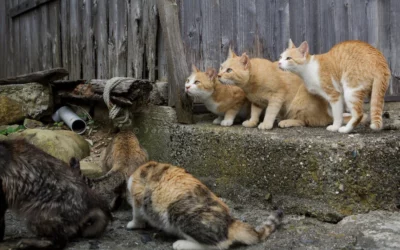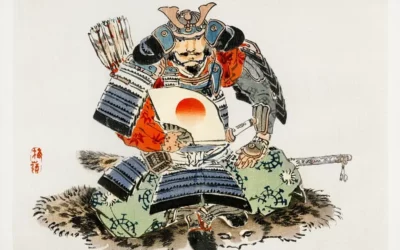Yukata and kimono are two traditional Japanese garments that have a deep-rooted cultural significance. These elegant attires continue to be cherished and worn in contemporary Japan, showcasing the enduring beauty and craftsmanship of Japanese fashion.
Yukata
Origin and History
The yukata has its origins in the Muromachi period (1336-1573) when it was primarily used as a casual bathrobe for relaxation. Over time, it evolved into a popular summer garment worn by both men and women during festivals and outings.
During the Edo period (1603-1868), yukatas gained popularity among regular citizens as they were more affordable compared to formal kimonos. The light fabric of the yukata made it ideal for hot summer days, allowing people to move comfortably while still adhering to traditional attire.
In addition to being associated with festivals, yukatas are commonly worn in onsen (hot spring) towns. Visitors often enjoy strolling through these towns adorned in colorful yukatas, immersing themselves in both nature’s beauty and Japan’s rich cultural heritage.
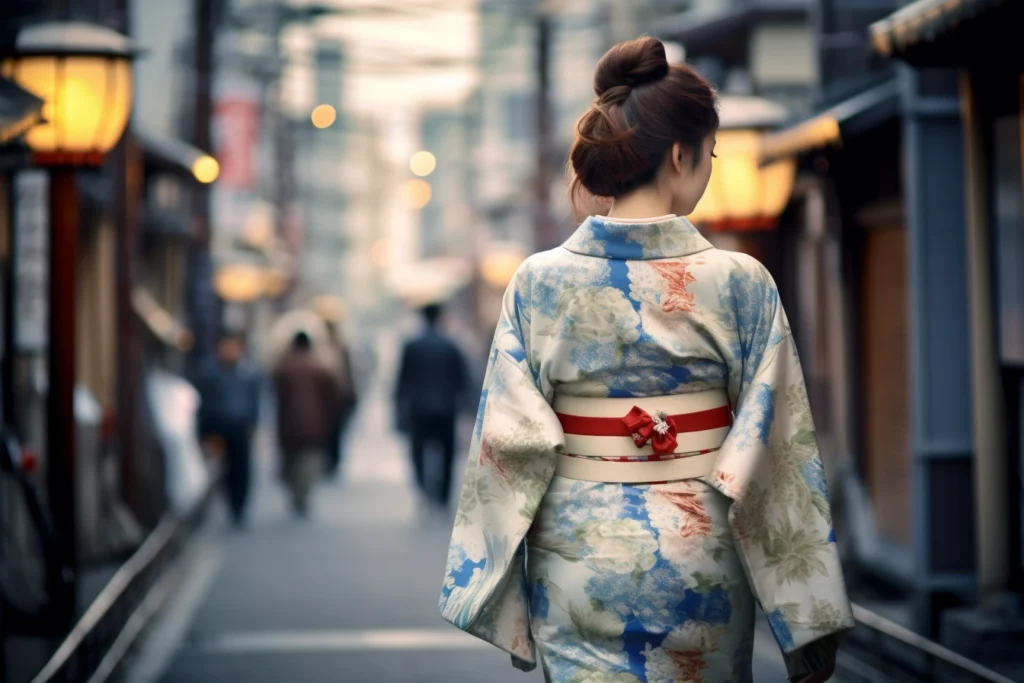
Characteristics
The yukata is characterized by its lightweight cotton fabric, making it breathable and suitable for warm weather. Its simple construction consists of straight seams with wide sleeves, allowing for ease of movement.
Vibrant patterns and colors are hallmarks of yukatas. Traditional motifs include floral designs like cherry blossoms or seasonal themes such as fireworks or waves. These patterns evoke a sense of joy, celebration, and appreciation for nature’s beauty.
The yukata is traditionally worn with an obi (sash) around the waist, which adds a touch of elegance to the ensemble. Geta, or wooden sandals, are often worn with yukatas to complete the look.
Occasions for Wearing Yukata
The yukata holds significance in various occasions and settings. It is commonly seen during summer festivals (matsuri) across Japan, where locals and visitors don colorful yukatas as they partake in traditional performances, enjoy street food, and observe fireworks displays illuminating the night sky.
Beyond festivals, yukatas are also popular attire for casual events such as hanabi parties (firework viewing gatherings) or matsuri-themed parties. Many Japanese people cherish the comfort and relaxed feel of yukatas when spending time at home or attending social gatherings during hot summer days.
When wearing a yukata, there are certain etiquette practices to keep in mind. The left side of the garment should be wrapped over the right side—a rule typically reserved for dressing deceased individuals in kimonos. Additionally, accessories like kanzashi (traditional hair ornaments), tabi socks, and a small purse called kinchaku can complement the overall look.
Symbolism and Meaning in Yukata Design
The patterns and colors found on a yukata convey symbolism deeply rooted in Japanese culture. Each motif tells its own story and carries cultural significance.
For example, some designs may feature auspicious symbols believed to bring good fortune or ward off evil spirits. Others may depict seasonal elements that reflect Japan’s natural beauty throughout the year. The color choices also have meanings—red symbolizes passion and vitality while blue represents tranquility and serenity.
As for black yukatas specifically, they often signify formality or solemn occasions like funerals or memorial services. Black is a color associated with mourning and signifies respect for the deceased.
By incorporating these elements into yukata designs, wearers can express their appreciation for Japanese traditions and add depth to their personal style.
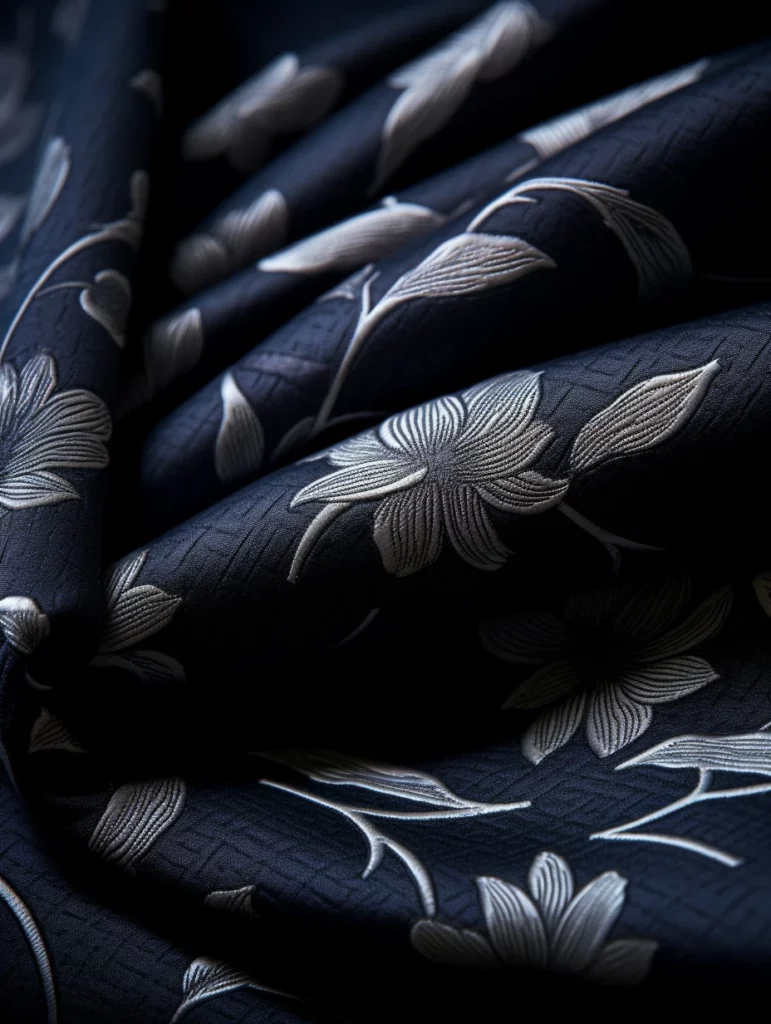
Kimono
The kimono is a traditional Japanese garment that holds great cultural significance. With its timeless elegance and exquisite craftsmanship, the kimono stands as a symbol of Japan’s rich history and traditions.
Origin and History
The origins of the kimono can be traced back to ancient Japan. The word “kimono” itself translates to “something worn,” reflecting its fundamental purpose as clothing. Over the centuries, the kimono evolved into a formal attire worn on special occasions and ceremonies, signifying both reverence and respect for tradition.
One notable influence of the kimono can be seen in traditional arts like tea ceremonies, where participants often wear elegantly crafted kimonos. Another aspect deeply associated with the kimono is geisha culture, where intricate kimonos are worn during performances that showcase grace, artistry, and skill.
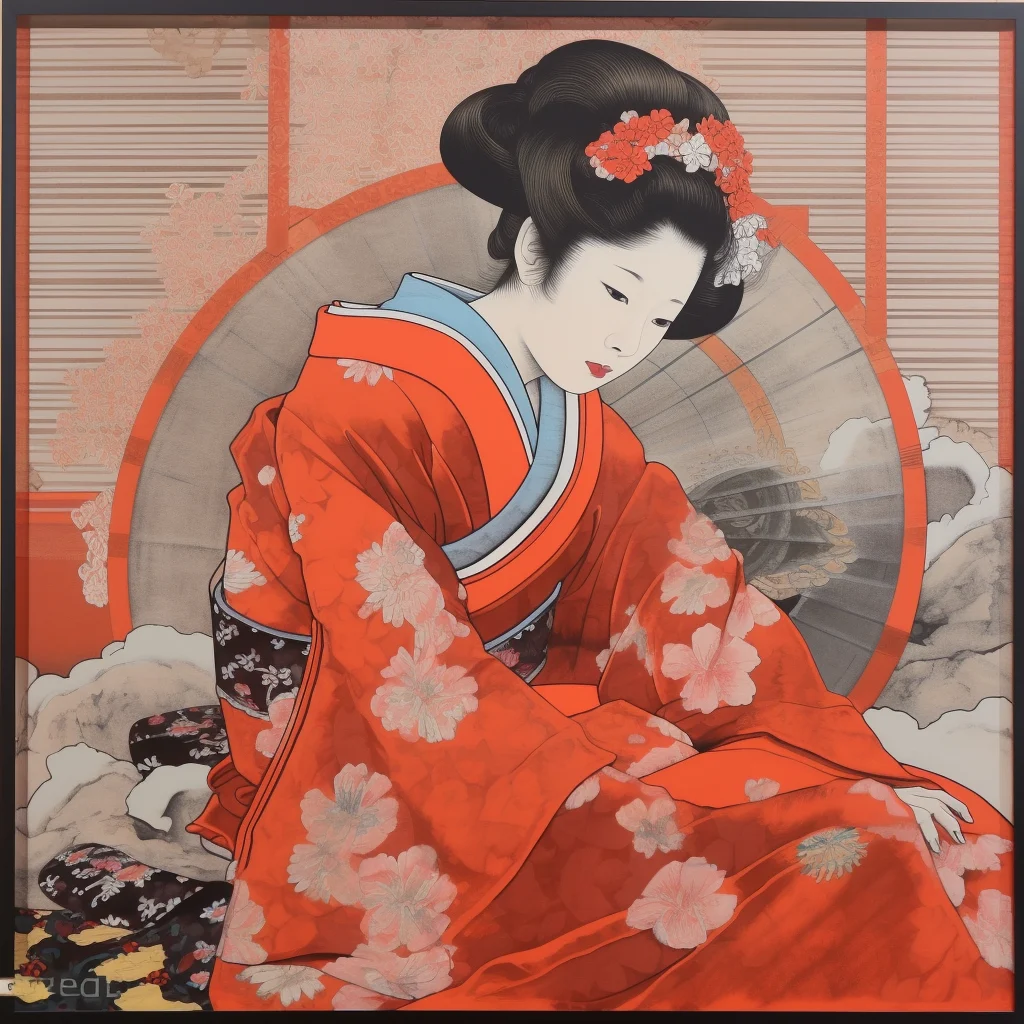
Characteristics
The kimono is characterized by its distinctive features that contribute to its iconic appearance. Intricate patterns adorn the fabric, telling stories inspired by nature, folklore, or historical events. The long sleeves known as “furisode” are particularly noteworthy and are typically seen on unmarried women during formal occasions.
Kimonos are made through meticulous craftsmanship and attention to detail. The fabric is layered to create an elegant drape around the wearer’s body while maintaining a sense of modesty. Every type of kimono serves a specific purpose—whether it’s the formal tomesode worn by married women or the casual komon for everyday wear.
To complete a traditional kimono ensemble, an obi—a wide sash—is tied around the waist, emphasizing the garment’s grace and form. Zori, flat sandals made from various materials such as lacquered wood or leather, are commonly worn with kimonos.
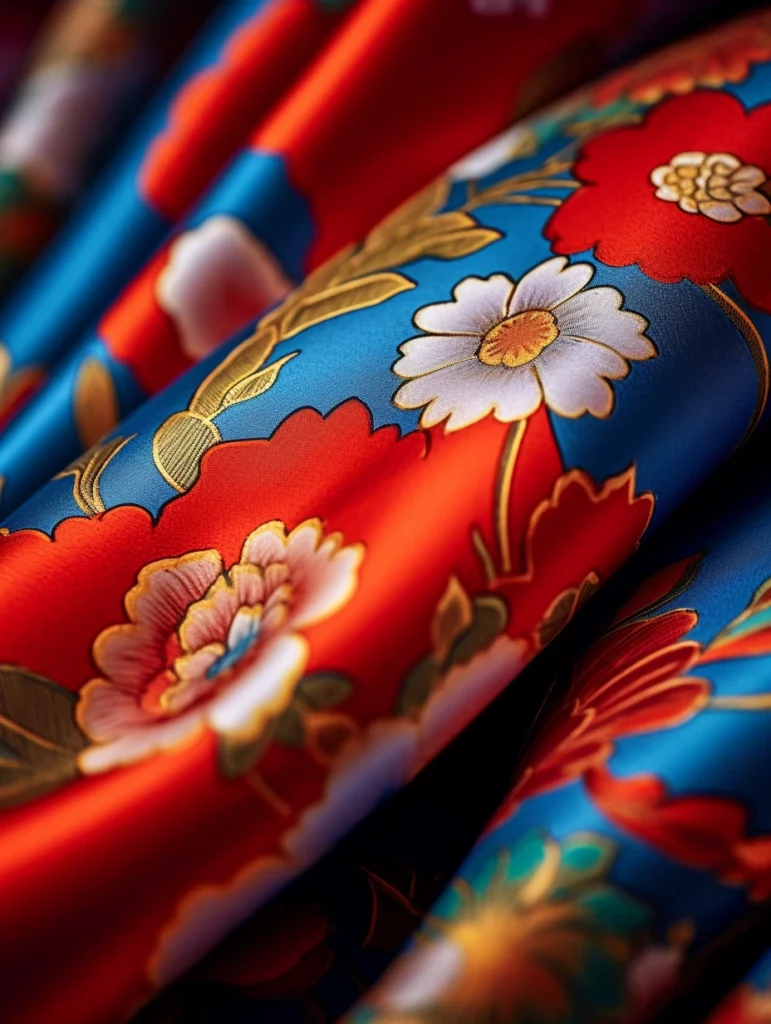
Occasions for Wearing Kimono
Kimonos are often reserved for formal events and ceremonies. Weddings, tea ceremonies, and coming-of-age celebrations provide opportunities for individuals to showcase their family heritage, social status, and personal style through their choice of kimono.
In Japan, different stages of life are marked by specific styles of kimono. For example, young women may wear a furisode during their Coming of Age Day celebration, symbolizing their transition into adulthood. Married women typically wear more subdued colors and designs that reflect their marital status.
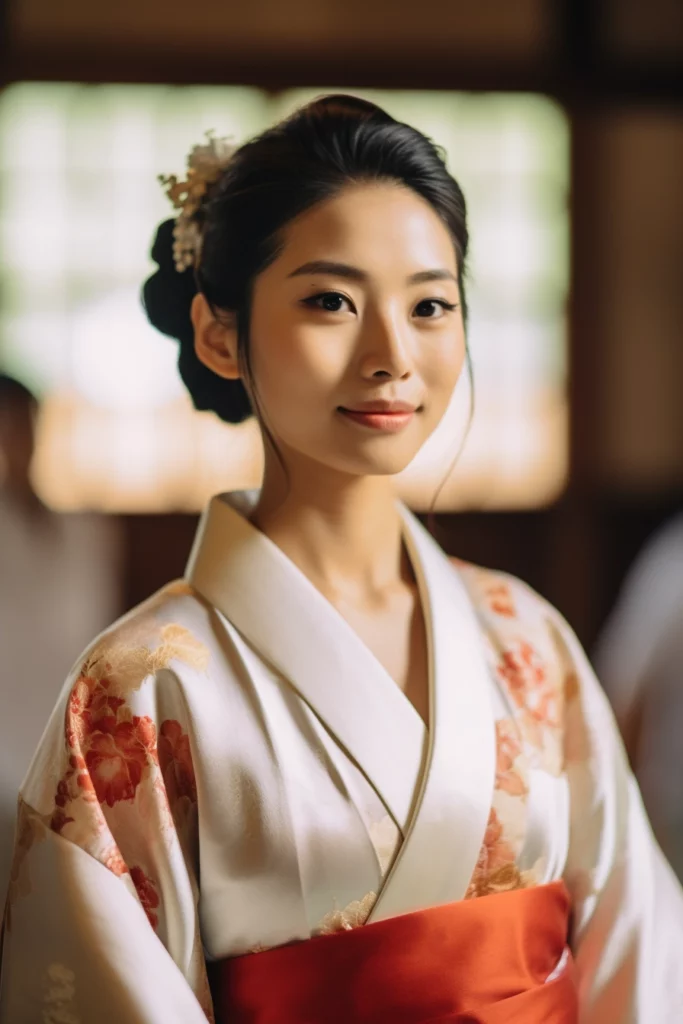
Wearing a kimono is a highly ceremonial process in itself. From putting on the undergarments to carefully wrapping the layers of fabric and tying the obi in a specific style, each step must be executed with precision. Etiquette also dictates how accessories like obiage (scarf-like accessory) and zori should be coordinated with the overall ensemble.
Symbolism and Meaning in Kimono Design
The intricate patterns and colors found in kimono designs have symbolic meanings deeply rooted in Japanese culture. These elements serve as visual narratives that express wealth, good fortune, class distinction, or even rank within society.
For example, certain patterns featuring cranes may represent longevity and good luck, while others depicting chrysanthemums signify autumn—a season associated with harvest abundance in Japan. Additionally, darker colors historically denoted higher socioeconomic status due to the expensive dyeing processes required to achieve those hues.
The Cost of Kimono
Kimono prices can vary significantly depending on factors such as the quality of fabric and the intricacy of the design. A kimono can range from around $500 for a simpler style to thousands of dollars for meticulously crafted and highly sought-after pieces.
In contrast, yukatas are generally more affordable as they are often made of cotton and have less intricacy in their designs. While both yukatas and kimonos hold cultural significance, the cost difference reflects the level of craftsmanship and materials used in their production.
Yukata vs Kimono
| Yukata | Kimono |
|---|---|
| Made of Cotton | Made of Silk or Other Fabrics |
| Casual Attire for Summer Festivals | Formal Attire for Ceremonies |
| Vibrant Patterns and Colors | Intricate Designs Reflecting Social Status |
| Easier to Wear with Simple Construction | More Complex Layered Construction |
Trying on Yukata and Kimono
For tourists visiting Japan, the experience of trying on a yukata or kimono is highly popular. Rental services make it convenient for both locals and visitors to immerse themselves in Japanese culture by donning these traditional garments.
The fees for renting a basic yukata or kimono vary depending on the rental shop and the location. On average, basic rentals can start around ¥3,000 for several hours. More formal or intricate styles may have higher rental fees to account for the craftsmanship and quality of the garments.
In addition to renting the attire itself, many rental services offer additional services to enhance the experience. These services may include hairstyling that complements the chosen garment, makeup application to achieve an authentic look, and professional photography sessions to capture memories in these stunning outfits.
Naturally, foreigners are more than welcome to wear yukatas as they participate in cultural activities across Japan. The rental shops provide instructions and assistance in dressing properly, ensuring that everyone can enjoy this unique experience regardless of their background.
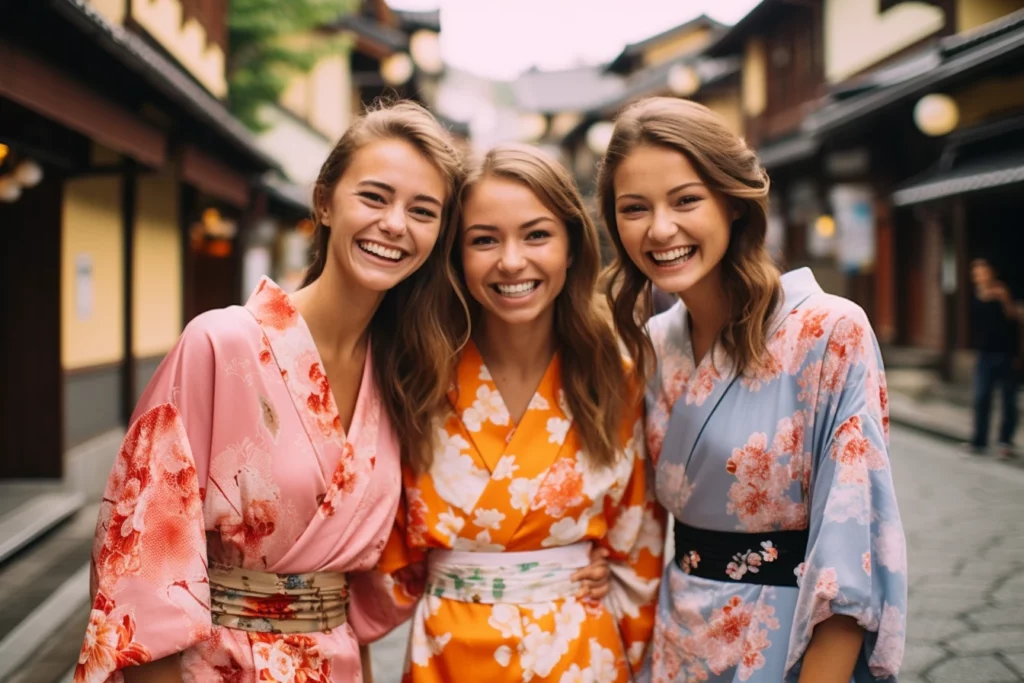
Buying Yukata and Kimono
If you’re interested in owning your own yukata or kimono, there are various options available for purchase. Physical stores specializing in traditional clothing can be found throughout Japan’s major cities like Tokyo, Kyoto, or Osaka. These stores offer a wide range of designs and sizes suitable for different individuals.
In recent years, online platforms have also become popular choices for purchasing yukatas and kimonos. Reputable online retailers provide detailed product descriptions along with measurements to ensure a proper fit. However, it’s essential to carefully consider sizing charts and consult customer reviews before making a final decision.
Maintaining silk kimonos requires extra care due to their delicate nature. Specialized dry cleaning services are recommended to preserve the quality and longevity of silk garments. For cotton yukatas, handwashing or following specific care instructions provided by the manufacturer is typically sufficient to keep them in good condition.
Other Questions that often come on Kimono and Yukata
- Do you wear undergarments under a kimono? Typically, women wear a juban (a special kind of undergarment) beneath their kimono for added comfort and to protect the kimono from sweat.
- How do you respectfully wear a kimono? Wearing a kimono requires attention to detail, from properly layering each garment to tying the obi correctly. It is advised to seek guidance or take lessons from professionals for an authentic and respectful wearing experience.
- How do you go to the bathroom in a kimono? Traditional kimonos can be quite intricate and time-consuming to remove completely when using the restroom. To address this issue, some modern adaptations feature convenient ties along the waistline known as “koshi himo” that allow easier access without unraveling the entire outfit.
- Do girls wear bras under yukata? It’s common for women to wear an appropriate bra underneath their yukatas for comfort and support, much like they would with other outfits.
- Can you wear flip flops with yukata? While it’s not traditional, many people choose to pair their yukatas with comfortable footwear such as geta sandals or even modern flip flops if desired.
To wrap it up
In summary, both yukata and kimono hold significant cultural value and play important roles in Japanese society. Yukatas are often associated with festive occasions and provide a more casual option, while kimonos are formal attire typically worn for ceremonies and special events.
The differences between yukata and kimono extend beyond their formality levels. Yukatas are usually made of cotton, feature vibrant patterns, and are easier to wear, making them popular during summertime festivals. On the other hand, kimonos exhibit intricate designs with layered silk fabric that reflect social status and tradition.
Regardless of these distinctions, both yukata and kimono continue to captivate people’s imagination with their timeless beauty. Even in contemporary fashion, these traditional garments influence modern styles and serve as reminders of Japan’s rich cultural heritage.

